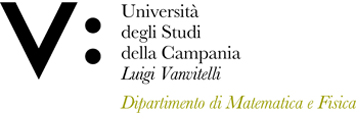Luigi MORETTI
Insegnamento di PHOTONICS AND NANOTECHNOLOGIES
Corso di laurea magistrale in PHYSICS
SSD: FIS/03
CFU: 6,00
ORE PER UNITÀ DIDATTICA: 48,00
Periodo di Erogazione: Primo Semestre
Italiano
| Lingua di insegnamento | INGLESE |
| Contenuti | Low dimensional physics, Photonics, graphene |
| Testi di riferimento | Applied Nanophotonics |
| Obiettivi formativi | The course intends to provide an introduction to the nanotechnologies, with |
| Prerequisiti | Adequate knowledge of Quantum Mechanics and electromagnetism |
| Metodologie didattiche | The course is organized in 48 hours of frontal lectures. |
| Metodi di valutazione | The examination consists in an oral interview based on the discussion of |
| Programma del corso | Electrons in potential wells and in solids |
English
| Teaching language | English |
| Contents | Low dimensional physics, Photonics, graphene |
| Textbook and course materials | Applied Nanophotonics |
| Course objectives | The course intends to provide an introduction to the nanotechnologies, with |
| Prerequisites | Adequate knowledge of Quantum Mechanics and electromagnetism |
| Teaching methods | The course is organized in 48 hours of frontal lectures. |
| Evaluation methods | The examination consists in an oral interview based on the discussion of |
| Course Syllabus | Electrons in potential wells and in solids |








